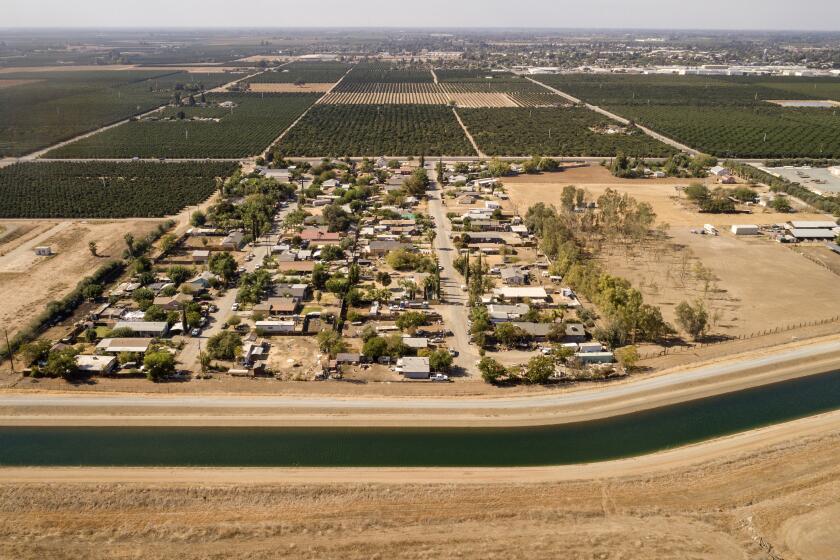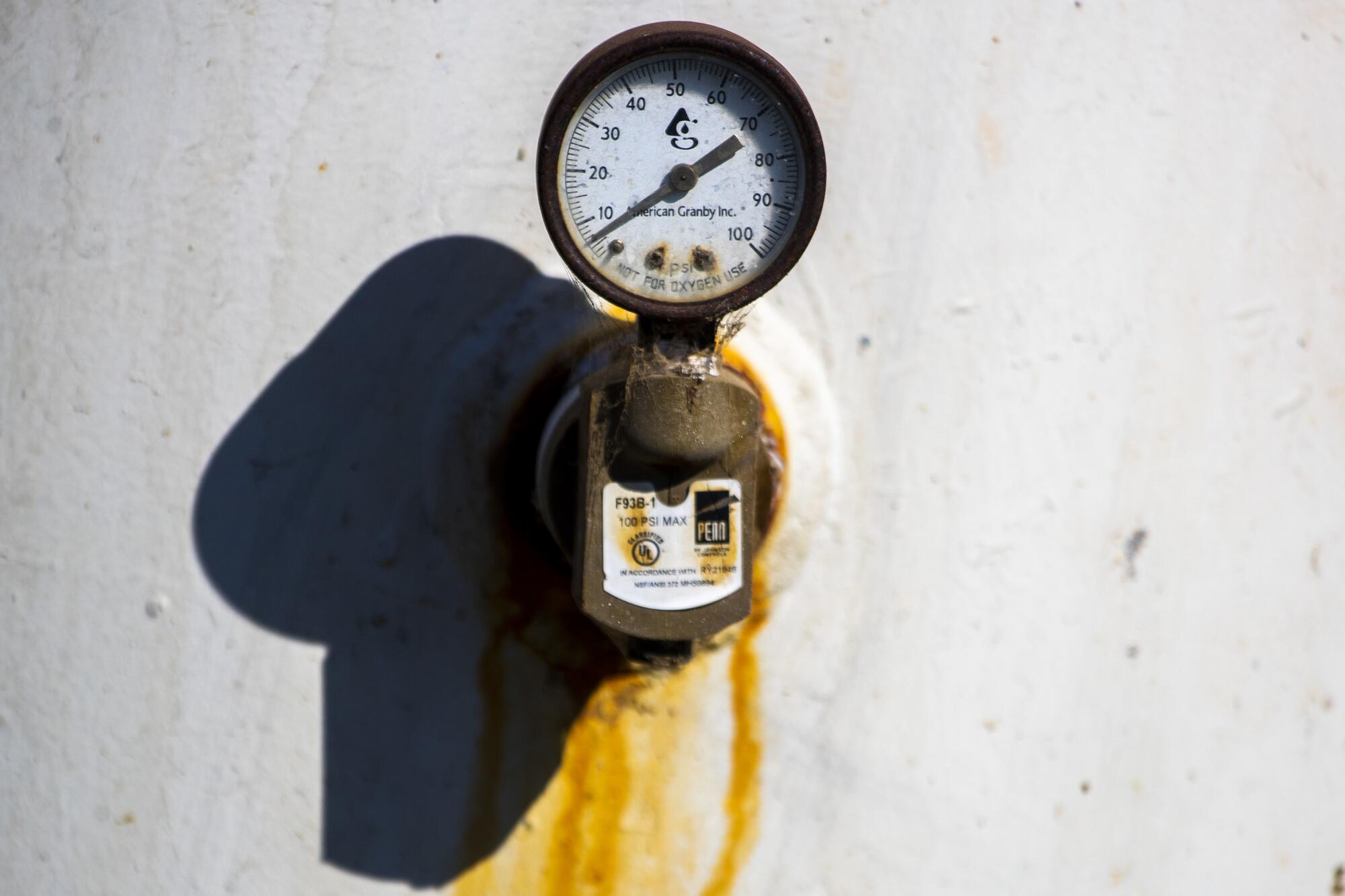
VISALIA, Calif. â On a hot morning in August, the pressure gauge on JesĂşs BenĂtezâs well read about 10 pounds per square inch â barely enough for a trickle.
The 74-year-old has been living just outside of Visalia, in the heart of Californiaâs San Joaquin Valley, for about 14 years, ever since he decamped from Downey in search of bigger skies and more space. But the once-green three-acre property that was meant to be his retirement haven is now dry, brittle and brown.
Like a growing number of Central Californians, BenĂtez is bearing the brunt of the stateâs punishing drought, which is evaporating the stateâs surface water even as a frenzy of well drilling saps precious reserves underground. As a result, the number of dry wells in California has increased 70% since last year, while the number of Californians living with contaminated drinking water is at nearly 1 million.
The majority of those people live in low-income communities and communities of color, state data show â and experts say heat, drought and climate change are only making those inequities worse.
âWeâre fighting an uphill battle due to climate change,â said Gregory Pierce, director of the Human Right to Water Solutions Lab at UCLA. âEven with the progress weâre making, there are other losses that few people anticipated when it comes to heat impacts on water quality ... and the pace at which people, and even larger systems, are at risk of running out of water entirely.â
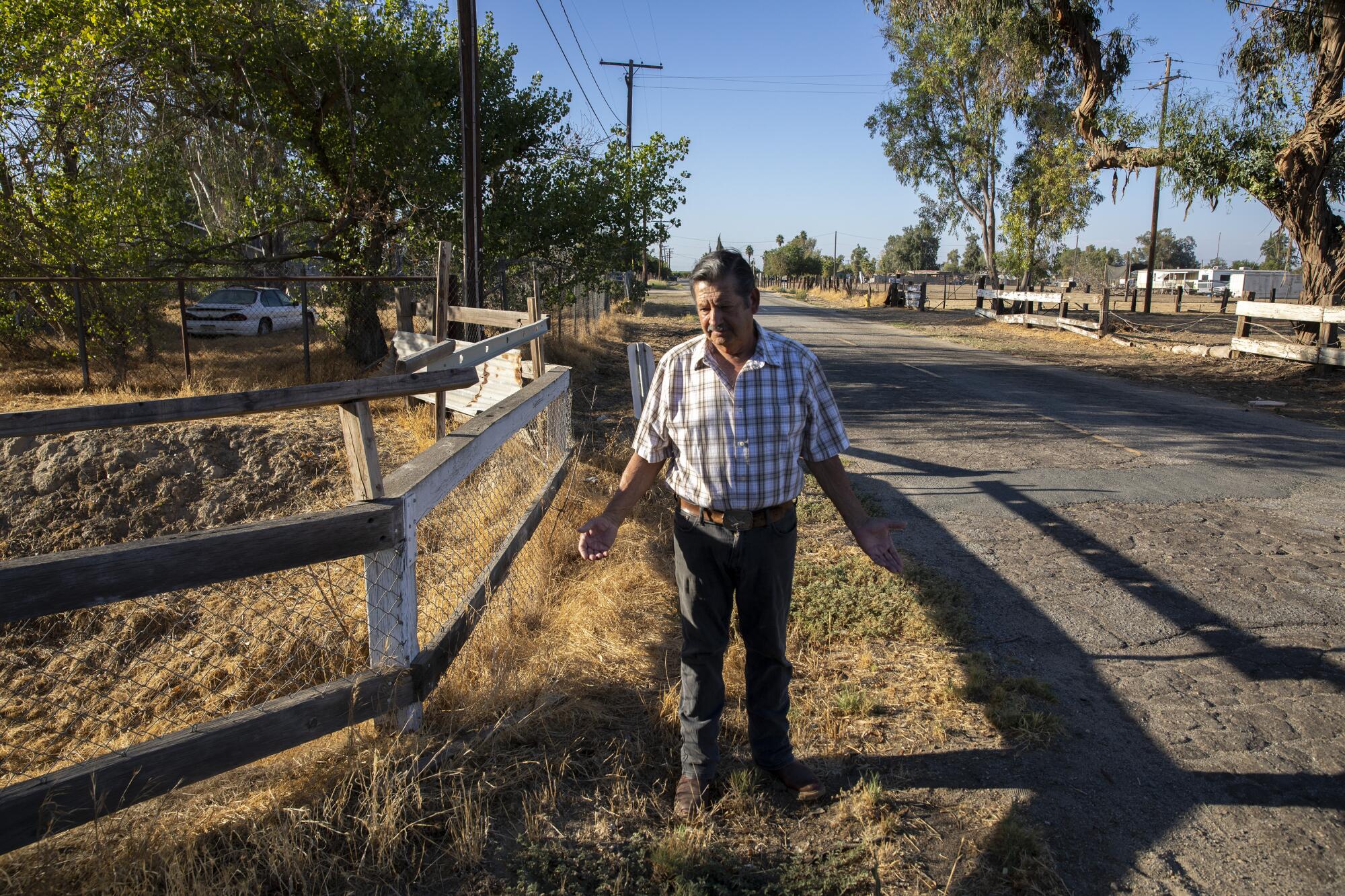
BenĂtez is one of the unlucky people dealing with both. His sputtering well â the only source of water on his property â is polluted with nitrates, uranium and hexavalent chromium, which are becoming more concentrated as the water draws down. He and about 60 other residents in the area are trying to get connected to the water system that services the city of Visalia, but officials have told them the work may not be complete until 2024.
âI hope I donât die without water by then,â BenĂtez said. The nearest municipal pipeline ends just about 100 feet from his property.
His story is becoming increasingly common in California, where an audit last month found that the State Water Resources Control Board âlacks the urgency necessary to ensure that failing water systems receive needed assistance in a timely manner.â The audit also noted that more than two-thirds of the water systems that have fallen below basic quality standards are in disadvantaged communities of significant financial need.
âCalifornia is one of the largest economies in the world, and yet this is happening here,â said Pedro CalderĂłn Michel, a spokesman with the nonprofit group the Community Water Center. All too often, he said, âthe browner your skin, the browner your water will be.â
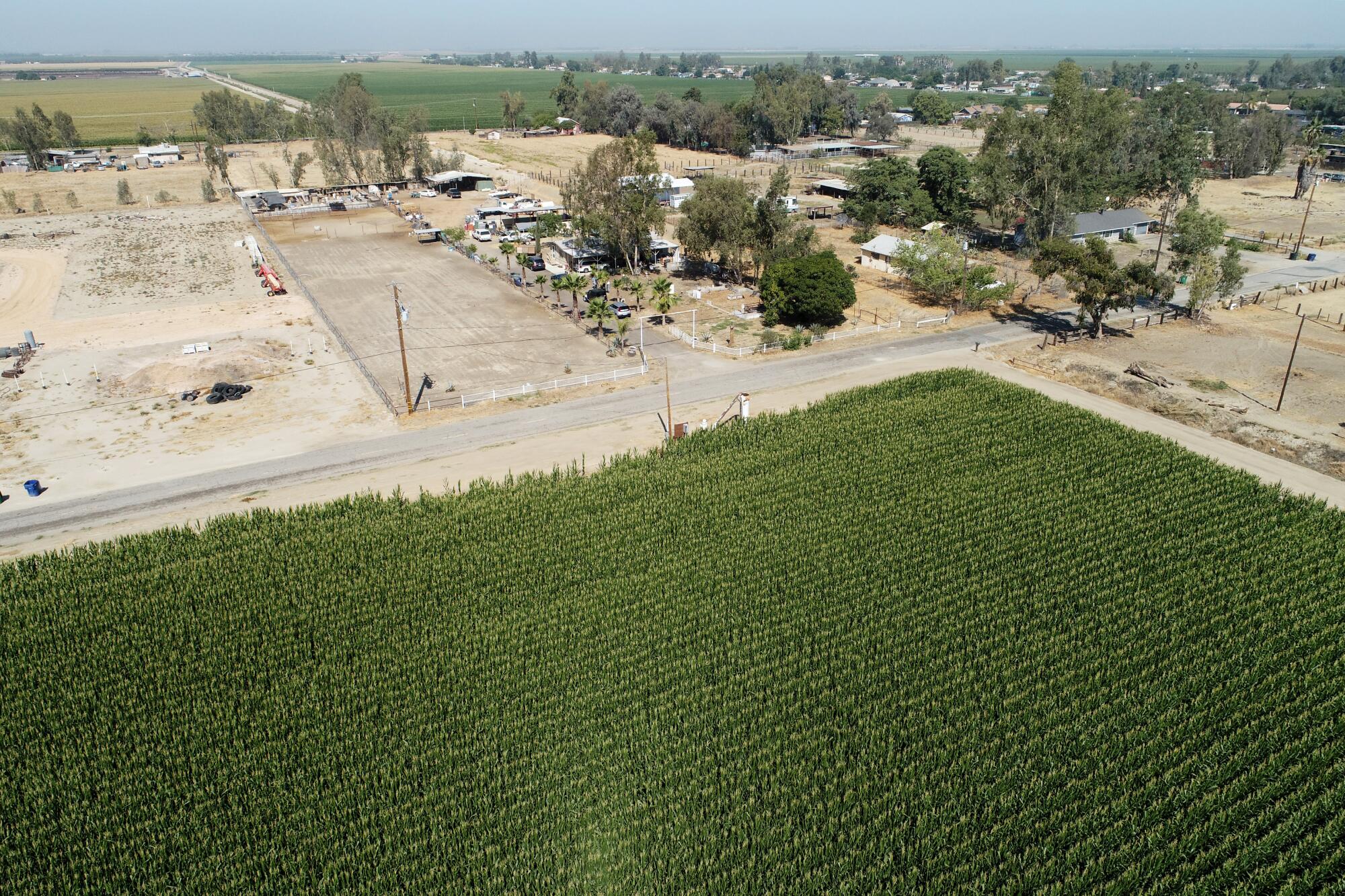
The problem is multifaceted. On the surface, climate change-fueled heat and dryness are contributing to a thirstier atmosphere that is sapping the stateâs water, while a persistent lack of rain and snowpack means mounting deficits are not getting replenished. More than 97% of the the state is under severe, extreme or exceptional drought, and officials have said the first half of the year was the driest itâs ever been.
But much of the problem is happening underground, where Californiaâs aquifers have long served as a reliable source of water, especially during dry times. In 2014, the state passed the Sustainable Groundwater Management Act, a historic law intended to address the overpumping of those supplies. But the act laid out a timeline that spans more than two decades, and set off a rash of well drilling among those trying to beat the deadline, particularly in agricultural areas where wells are the lifeblood of the industry.
Residents who rely on domestic wells are increasingly paying the price. BenĂtezâs well, for example, dried up after a neighbor installed a new, deeper well to help water 25 acres of silage corn, or corn used to feed dairy cows and other livestock.
That neighbor, Frank Ferreira, said he spent $160,000 on the well, and he may need to dole out even more to dig deeper when it dries up. When asked whether the state has placed any limits on how deep he can go, Ferreira said, ânot yet.â
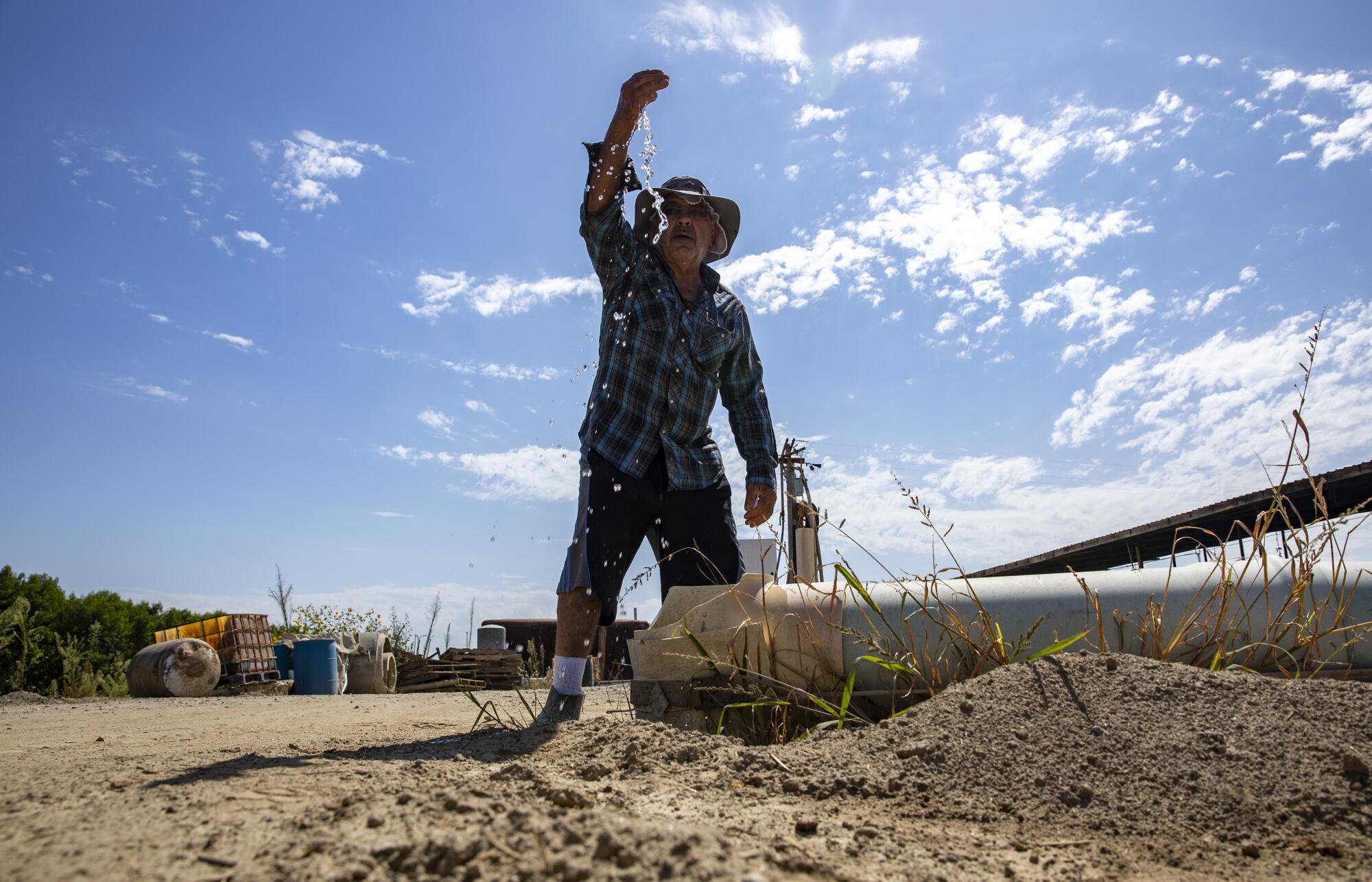
While agriculture is a leading factor in groundwater depletion and contamination, the added layer of drought is exacerbating the problem, according to Joaquin Esquivel, chair of the State Water Resources Control Board.
âAs you draw down your aquifers, you get left with more and more of the undesirable constituents,â he said. âIn water quality control, itâs often said, âThe solution to pollution is dilution.â When you have the opposite â very little amounts coming in, little recharge happening with fresher flows â you get an increase in contaminants.â
Esquivel acknowledged that some conclusions from the state audit were fair, including some findings around delayed response times for funding and other assistance for drinking water systems. Systems can receive funds to help with the design and construction of new infrastructure, the maintenance of existing infrastructure or other projects that address or prevent public health risks. Over the past five years, the average length of time for water systems to complete applications and receive funding from the board nearly doubled from 17 to 33 months, the audit said.
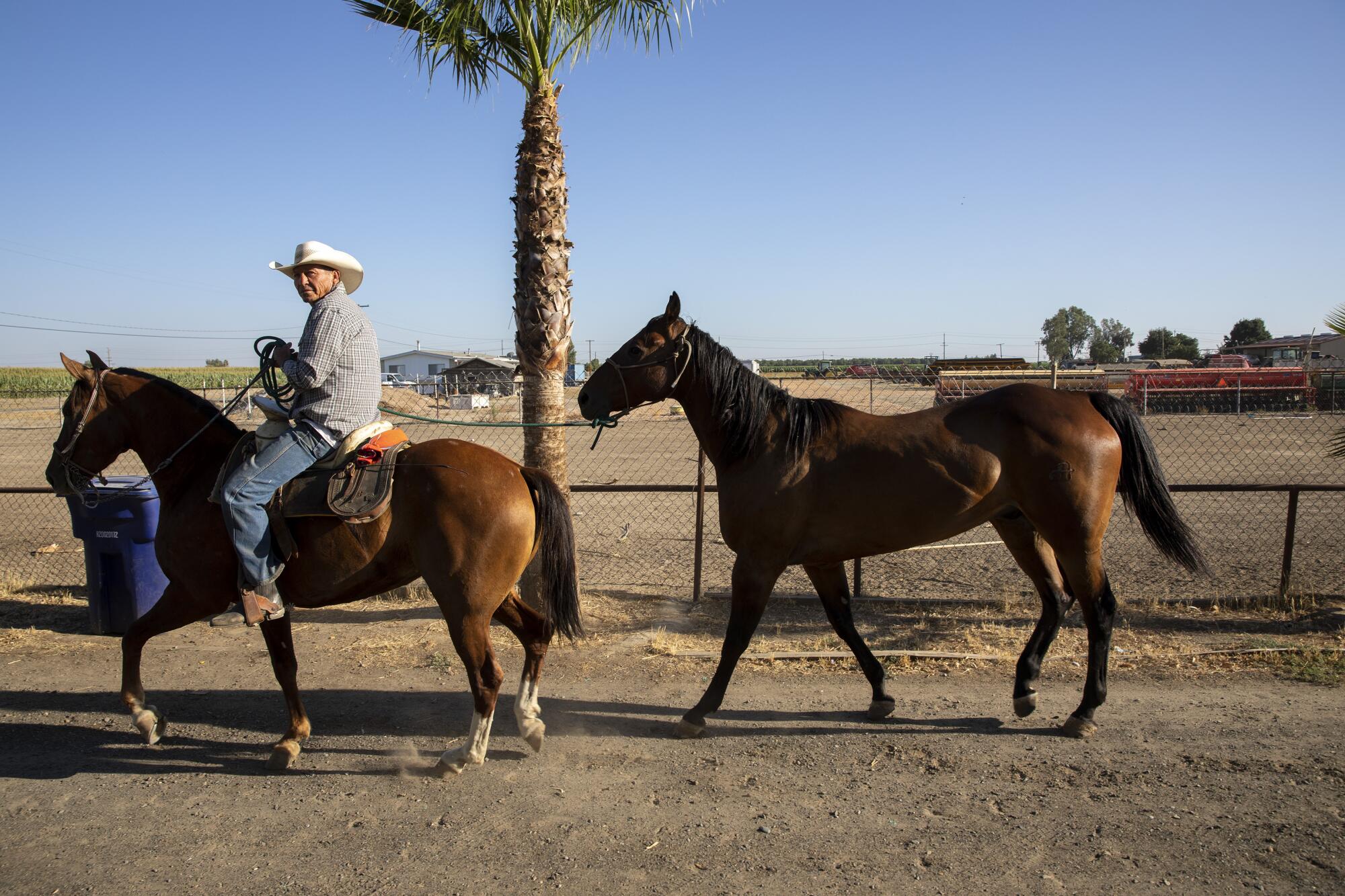
But he also called the top-line conclusion that the board lacks urgency âbombasticâ and inaccurate. Since 2019, the board has reduced the number of Californians served by failing systems by 40%, from 1.6 million to 950,000, he said. It also doubled the amount of community construction grants to $700 million and increased technical assistance funding for small disadvantaged communities by 150%.
âI think what we have is a really good down payment and a good start,â he said. âWhatâs helpful here is we need to continue to really be clear about how long it takes to get projects done.â
Critically, Esquivel also noted that many of the challenges the state is facing when it comes to clean, safe and affordable drinking water are the result of generations of racist policies.
âThereâs a complicated context to all of this,â he said. âThatâs not the excuse for why it takes the time it takes, but I think I do have to mention here that there were explicit redlining policies that purposely didnât extend service to our communities.â
Redlining was the institutional practice of denying homeownership and financial services to residents based on race.
The plight of Tooleville, with wells running dry, inspired a new law that gives the state power to mandate water consolidation with a neighboring town.
One Central Valley community that still feels the weight of those policies is Tooleville, which is home to about 200 residents, nearly half of whom are Latino, according to the latest U.S. Census.
In 1973, Tooleville was one of 15 communities that the Tulare County general plan deemed as having âlittle or no authentic future,â and for which public commitments should be âcarefully examined,â one study noted.
âThese non-viable communities would, as a consequence of withholding major public facilities such as sewer and water systems, enter a process of long term, natural decline as residents depart for improved opportunities in nearby communities,â the plan documents read.
But thatâs not what happened. Instead, residents there have for decades depended on two wells that have become increasingly contaminated with nitrates, arsenic, hexavalent chromium, 123 trichloropropane and other pollutants. Sometimes, they sputter to a stop.
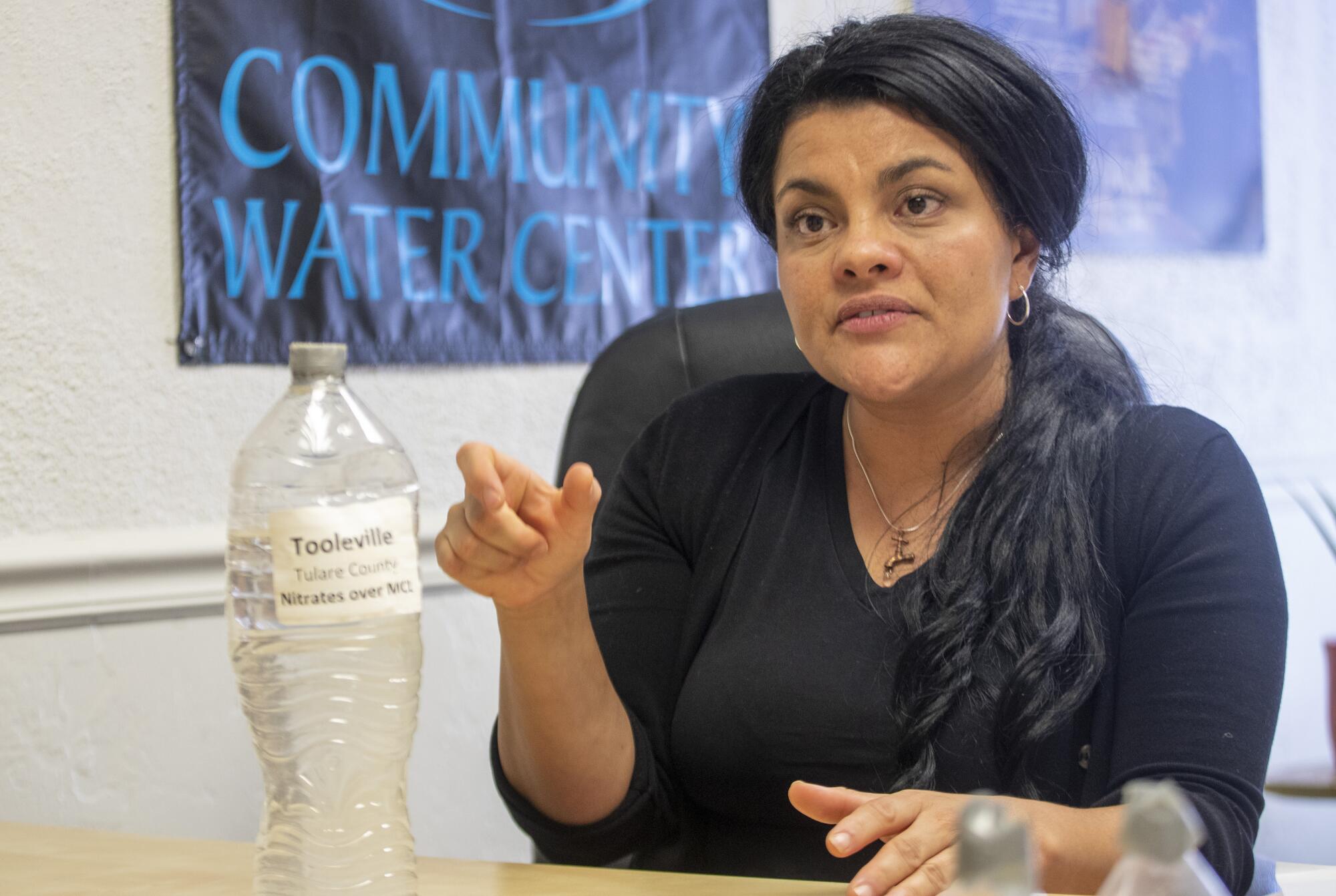
âIf youâre low income and a person of color and you live in the Central Valley, youâre going to have higher chances of having to pay for toxic water and a very expensive water bill for water that can get you sick,â said Susana De Anda, co-founder and executive director of the Community Water Center.
âItâs no surprise you go into our communities and you donât see a thriving community, because water limits growth,â she said. âThe most basic thing is, without safe drinking water, it blocks all economic development.â
The Community Water Center has spent the last 16 years working with residents on the ground in communities like Tooleville and fighting for legislation such as Californiaâs Human Right to Water Act and the Sustainable Groundwater Management Act. They also helped achieve a moratorium on unpaid water bills during the first year of the COVID-19 pandemic, De Anda said.
But while there have been many victories, the drought has created a new layer of difficulty, she said, and more than 90% of San Joaquin Valley residents are now relying solely on groundwater.
âUnfortunately the drought only worsens the already dire conditions that our community is faced with â which is they donât have safe drinking water,â De Anda said. âThatâs constant stress. Now on top of that, some are losing water. So you add the layer, again, on top of this disproportionate impact when it comes to water quality.â
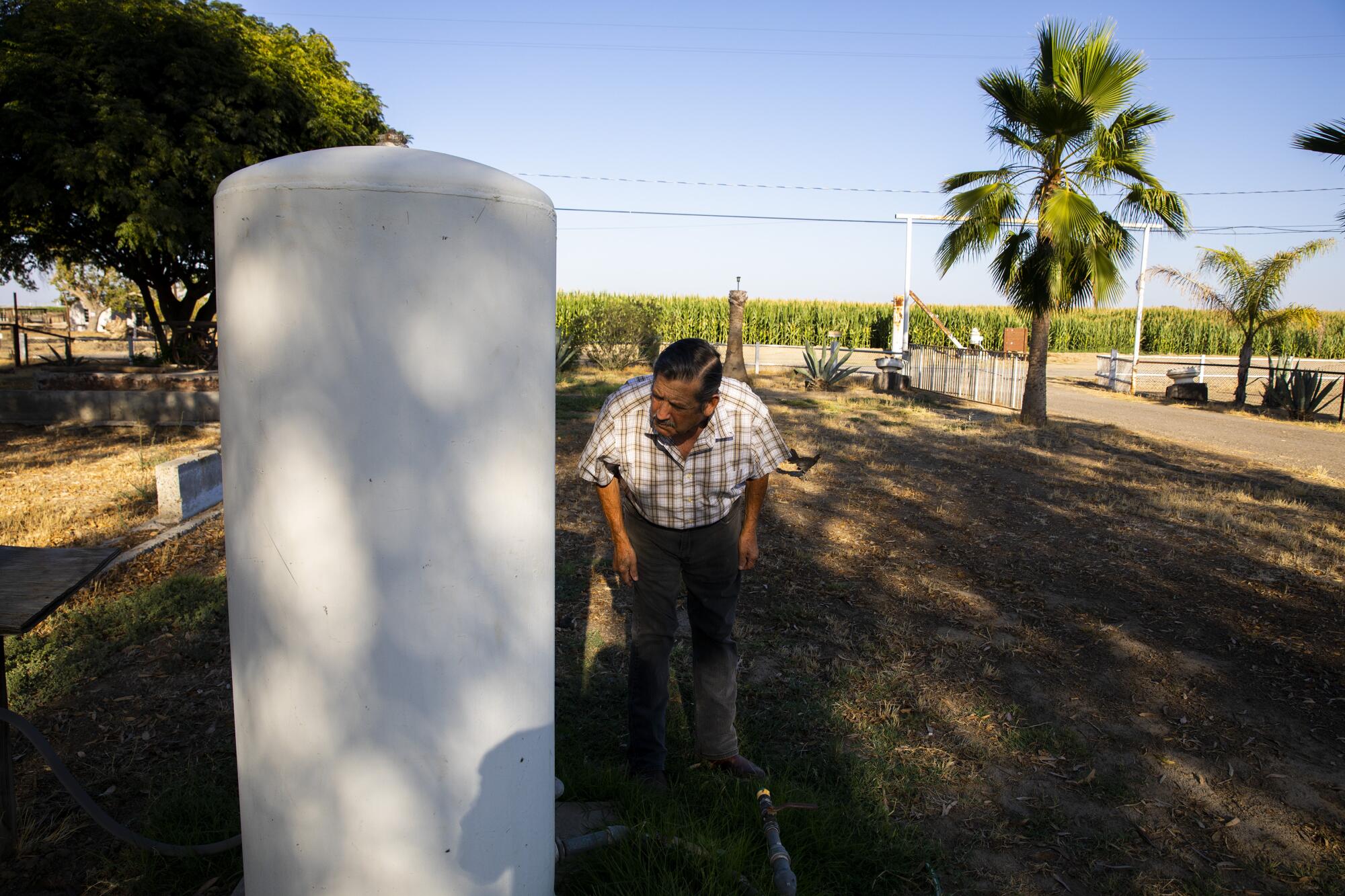
In March, Gov. Gavin Newsom issued a drought order intended to slow the drilling of new wells. The order prohibits local governments from granting well-drilling permits if the proposed well is inconsistent with an areaâs groundwater management plan. A piece of legislation, AB 2201, would have made that permanent, requiring groundwater sustainability agencies to weigh in on all well permit applications, but the bill didnât come up for a final vote and died in the Legislature.
De Anda said such legislation is important in securing clean, safe water for everyone. But she also noted that all too often, âwater flows toward money and power.â
âWeâre talking about millions of families in California that donât have safe drinking water and domestic wells,â she said. âThe narrative should be, how do we help prioritize these communities to have a resilient community? How do we make sure that theyâre part of water planning? How do we make sure that theyâre at the top of the list with resources? Thatâs what we should be thinking about.â
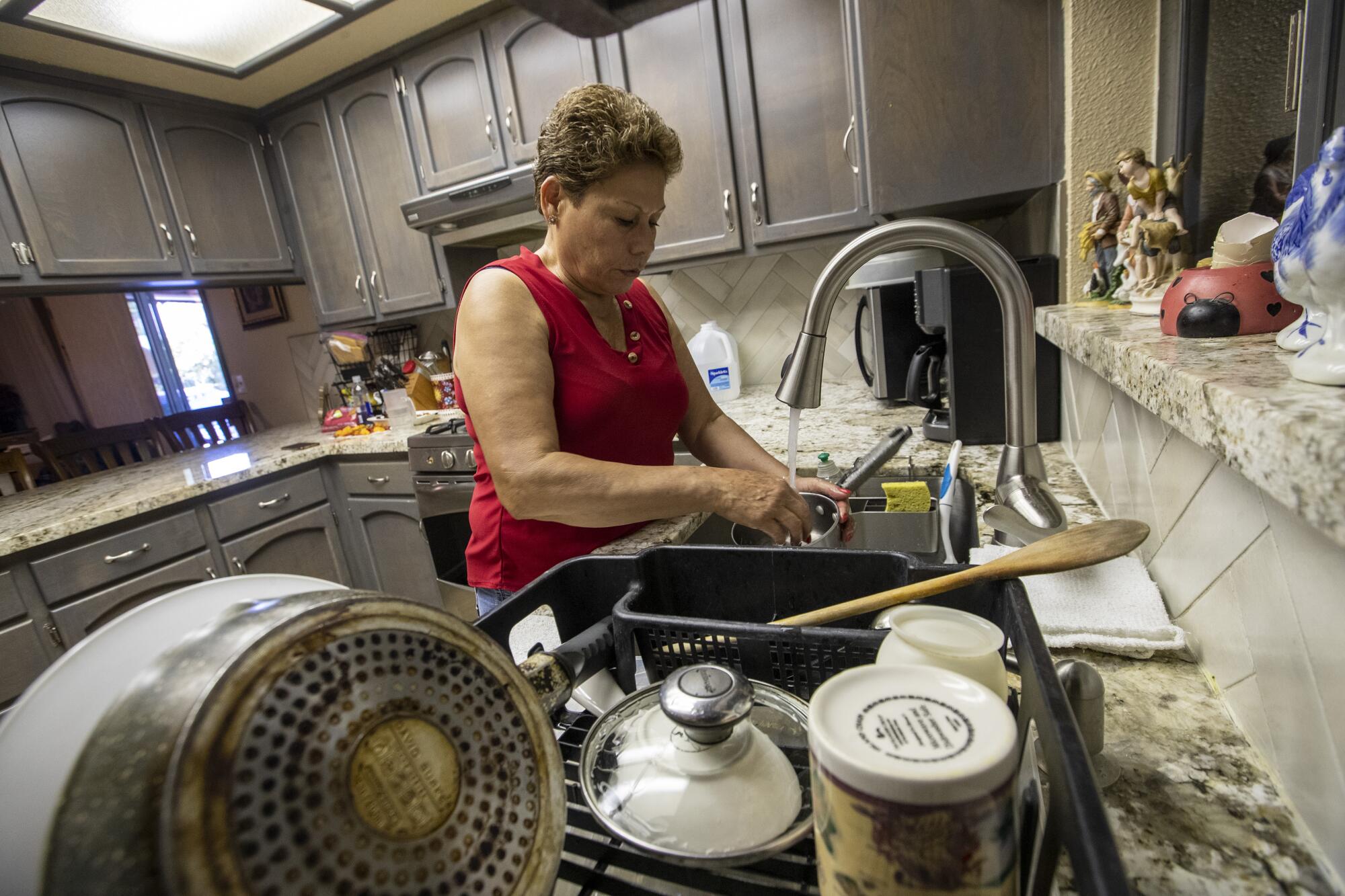
Pierce, of UCLA, shared a similar sentiment.
âThe impact of not having sufficient water is not just that you have to spend a bunch of money and get very little water, or you canât use water for X, Y and Z purposes,â he said. âItâs a mental health and stress impact far beyond that, and a âdignity as a resident of the stateâ impact. Itâs hard to overstate that.â
Maria Olivera, who has lived in Tooleville since 1974, today relies on bottled water that she receives in jugs from the state â 60 gallons every two weeks â which she uses primarily for cooking and drinking. But she still has to shower in contaminated water, and she has to remind her visitors not to drink it.
âItâs hard, the way we live,â said Olivera, 68. âYou always have to carry the gallons.â
Recently, the state ordered the neighboring community of Exeter to connect Tooleville to its water system after more than 20 years of refusing to do so. But the project could take two years to complete, Olivera said, and until then, sheâll keep relying on the plastic gallons.
Despite the challenges, Olivera shook her head when asked about the prospect of leaving. Tooleville has been her home for nearly 50 years.
âThis is it for me. Where else am I going to go?â she said. âItâs a really nice community â we just need water.â
